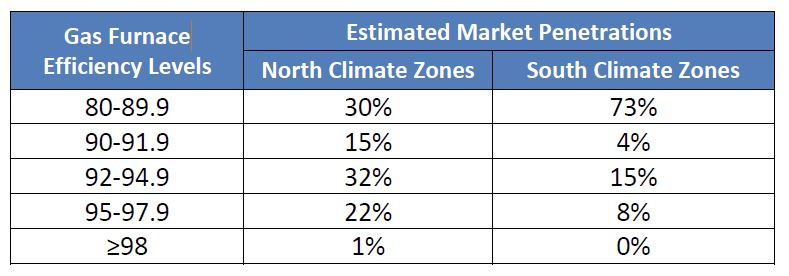 In baseball, a backstop is defined as a wall or fence behind home plate that keeps the ball on the playing field. One baseball backstop supplier notes that it protects fans from stray or foul balls. In the realm of energy code compliance, a building envelope backstop is needed for similar reasons. It keeps the building envelope thermal performance levels in the “playing field” and it prevents buildings from becoming “foul balls” that stray into unintended consequences.
In baseball, a backstop is defined as a wall or fence behind home plate that keeps the ball on the playing field. One baseball backstop supplier notes that it protects fans from stray or foul balls. In the realm of energy code compliance, a building envelope backstop is needed for similar reasons. It keeps the building envelope thermal performance levels in the “playing field” and it prevents buildings from becoming “foul balls” that stray into unintended consequences.
Now you might ask, how then does someone hit a “foul ball” in applying the energy code to a building such that an envelope backstop is needed?
Ever heard of “trade-offs”?
Example 1: Equipment Efficiency Trade-offs
One particularly problematic trade-off that some would like to use to weaken the building envelope (reduce insulation levels) is the use of HVAC equipment that is more efficient than that minimally required by the federal government. The kilowatt-hours of energy wasted by weakening building envelope insulation are being justified by using a more efficient HVAC system that uses less kilowatt-hours of energy. Unfortunately, this trade is not neutral in its consequences.
 In some significant cases, the federal equipment efficiency requirements are extremely out-dated and do not represent the common technology used in the market. In northern climates, 90% or greater efficiency gas furnaces are used at least 70% of the time in the market (see Table 1) and this usage increases in colder climates to more than 90% of the time (view source). But, the federal minimum has stagnated at 80% efficient equipment (old technology). So, one could use a common 90% efficiency furnace that would likely be used regardless of the energy code requirements and claim that it saves 10% from the minimum 80% efficiency that could be legally used. This 10% claimed savings, in the so-called energy neutral scheme, can then be used to weaken the building envelope by the same amount. Except, it is not just a 10% reduction in insulation levels. It is much greater because the 10% is not measured in units of insulation R-value but in units of annual energy use. This results in a potentially much larger decrease in the thermal performance (R-value) of the building envelope. For example, in many climate zones the insulation could be completely removed (i.e., 0 R-value) in the roof and walls, including use of single pane windows.
In some significant cases, the federal equipment efficiency requirements are extremely out-dated and do not represent the common technology used in the market. In northern climates, 90% or greater efficiency gas furnaces are used at least 70% of the time in the market (see Table 1) and this usage increases in colder climates to more than 90% of the time (view source). But, the federal minimum has stagnated at 80% efficient equipment (old technology). So, one could use a common 90% efficiency furnace that would likely be used regardless of the energy code requirements and claim that it saves 10% from the minimum 80% efficiency that could be legally used. This 10% claimed savings, in the so-called energy neutral scheme, can then be used to weaken the building envelope by the same amount. Except, it is not just a 10% reduction in insulation levels. It is much greater because the 10% is not measured in units of insulation R-value but in units of annual energy use. This results in a potentially much larger decrease in the thermal performance (R-value) of the building envelope. For example, in many climate zones the insulation could be completely removed (i.e., 0 R-value) in the roof and walls, including use of single pane windows.
Please review the article “Energy Code Myths that Haunt Us” and the accompanying educational presentation.
Thus, without a backstop and where such a trade-off is permitted, the building envelope can be reduced to insulation practices that existed a century ago. This is not energy neutral and it represents a significant backsliding away from the energy savings that are possible simply by using a good thermal envelope and commonly used HVAC equipment which exceed out-dated federal minimum efficiency levels. For additional information on equipment efficiency trade-offs refer to the ICF international study “Review and Analysis of Equipment Trade-offs in Residential Energy Codes”.
Example 2: On-site Renewable Energy Trade-offs
Another so-called “energy neutral” trade-off can occur when adding an on-site renewable energy system, such as roof top solar panels, to a building. Some propose to use renewable energy to trade-off building envelope insulation levels with similar performance impacts as discussed in Example 1.
Although the use of renewable energy is good and should be encouraged, it does not reduce the consumption of the building which is the role of energy conservation. The addition of renewables is not an excuse to weaken the thermal performance of the building envelope as it results in greater long term energy use. The appropriate application of renewable energy is as an additive measure after energy conservation (such as energy efficiency of the building envelope) has been achieved. This issue is addressed in more detail in two separate articles: "What Are the Pillars of a Sustainable Building Future?" and "Energy Efficiency or Trade-offs - Focus on What First?".
Implications
There are multiple ramifications of trading-off building envelope performance as demonstrated in the above two examples that necessitate having a backstop to prevent the building envelope from becoming a “foul ball”:
Permanence and Durability: The building envelope provides the most durable and lasting form of energy efficiency. It works 24-7 for 365 days a year over the life of a building. It is the most permanent and reliable energy efficiency practice and requires essentially no maintenance or replacement. When done well, it also protects the durability of the structure and its contents. Unlike building envelope measures like insulation, HVAC equipment and renewable energy systems do not have a service life that is consistent with the life of the building.
Cost-Effectiveness: The most cost-effective time to maximize efficiency of the building envelope is when it is newly constructed. It is very expensive to make significant improvements to the envelope after initial construction. It is imperative that building envelopes not be weakened at the time of construction.
Affordability: There is no free lunch! This is a matter of pay now or pay later. The new energy efficient buildings of today are the energy efficient affordable to own and operate existing buildings of tomorrow. Good building envelopes almost always allow you to decrease the needed size of your HVAC or renewable energy system making them more affordable as well.
Comfort: Well insulated and air-sealed envelopes with mitigated thermal bridges provide a more comfortable and easier to control indoor environment. Occupants tend to offset uncomfortable conditions by increasing or lowering set point temperature, resulting in more energy use and also potentially increased risk of moisture problems.
For additional information, please review the following articles and videos:
Articles
- What’s the Big Deal with Air Leakage?
- What Caused the Air Barrier Industry to Develop?
- POV Photos – Benchmarking OSB/Foam Sheathing Moisture Performance
- Creating the ‘Perfect Wall’: Simplifying Water Vapor Retarder Requirements to Control Moisture
- Perfect Walls Are Perfect, and Hybrid Walls Perfectly Good
- Energy Code Math Lesson: Why an R-25 Wall is Not Equal to a R-20+5ci
- Continuous Insulation Solves Energy Code Math Problem
Videos
- Fear Building Envelopes No More with This Website & Videos
- Video: Thermodynamics Simplified Heat Flows from Warm to Cold
- Video: Moisture Flow Drives Water Induced Problems
- Video: How the 'Perfect Wall' Solves Environmental Diversity
- Video: How Important Is Your WRB?
- Video: A Reliably Perfect Wall Anywhere
- Video: The Best Wall We Know How to Make
- Video: How to (Not) Ruin a Perfectly Good Wall
- Video: Tar Paper and Continuous Insulation? No Problem!
- Video: Do CI and WRBs Go Together?
- Video: Assess Your 'Perfect Wall' Using Control Layers
